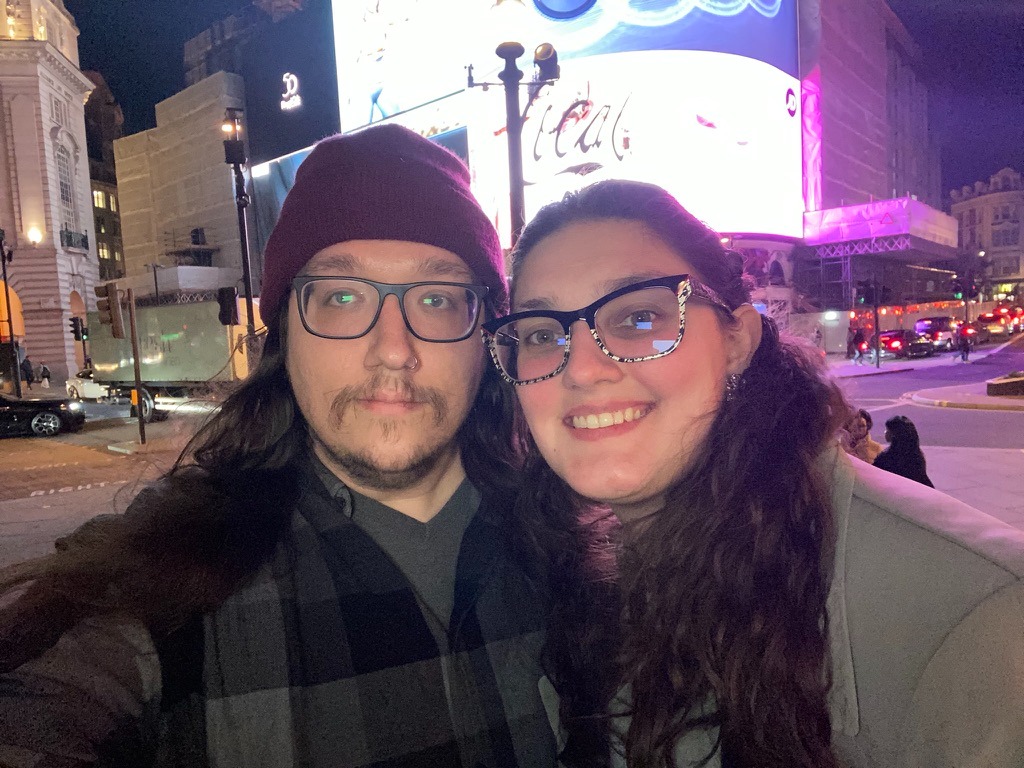
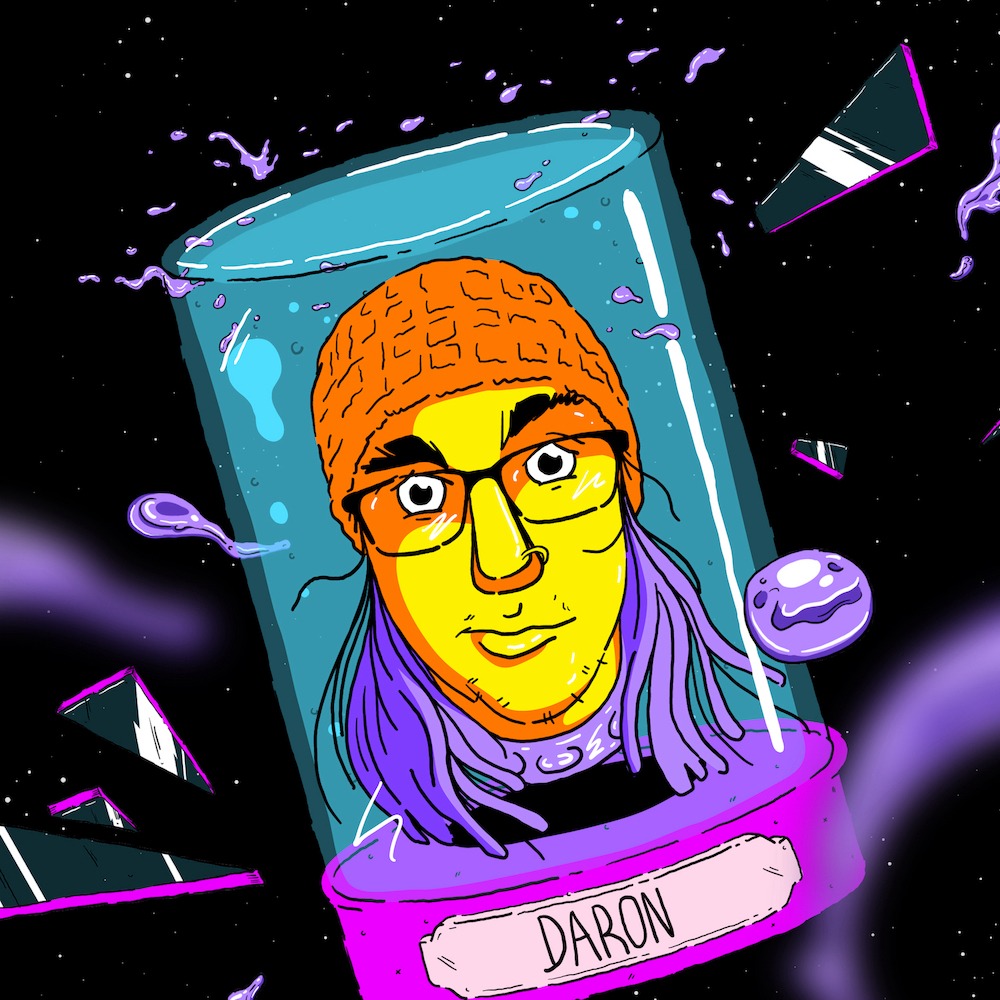
Goodbye London
Published by Daron on
Share this post
You can easily share this post on social media by clicking the "Copy URL" button or copy and pasting the URL from the box below.
After 3 nights in London, we're on our way to bigger (debatable) and better things!
Our final day in the city we spent wandering alone. I woke up to the soft British sun streaming in through the cracks in the long blue drapes covering the floor to ceiling windows. Alanna was still sound asleep as I dressed and departed to find some coffee and better wifi than the 💩 available at the hotel.
I strolled around the corner and stopped at "Black Cowboy Coffee" right off the traffic circle connecting the A2 to the A3. I was greeted warmly by the proprietor, ever the showman dressed in blue jeans, a tan vest, and a black cowboy hat. While he prepared my brew, I mentioned how the decor felt strangely welcoming. It was all western themed, with small desert plants, warm colors, and utilitarian furniture decorating the generous space.
Upon hearing of my heritage, the barista proudly pulled out his wallet to show me his Class C Texas drivers license! He had driven big rigs around the state for a decade and his children were all born in Texas. We exchanged another pleasantry as he handed me the steaming cup and I went to find a seat to work more on building this blog.
Alanna eventually awoke and went off to find a post office and some yarn to keep her company on the upcoming train ride. After finishing my coffee, I headed west towards the river in the direction of Westminster on foot. Within a few blocks, I arrived at the British War Museum. The grounds double as a public park, complete with dog corral and a playground for children. I entered through a small gate next to the Peace Garden. It was a pleasant site to take in after the dreary walk through the gray city streets.
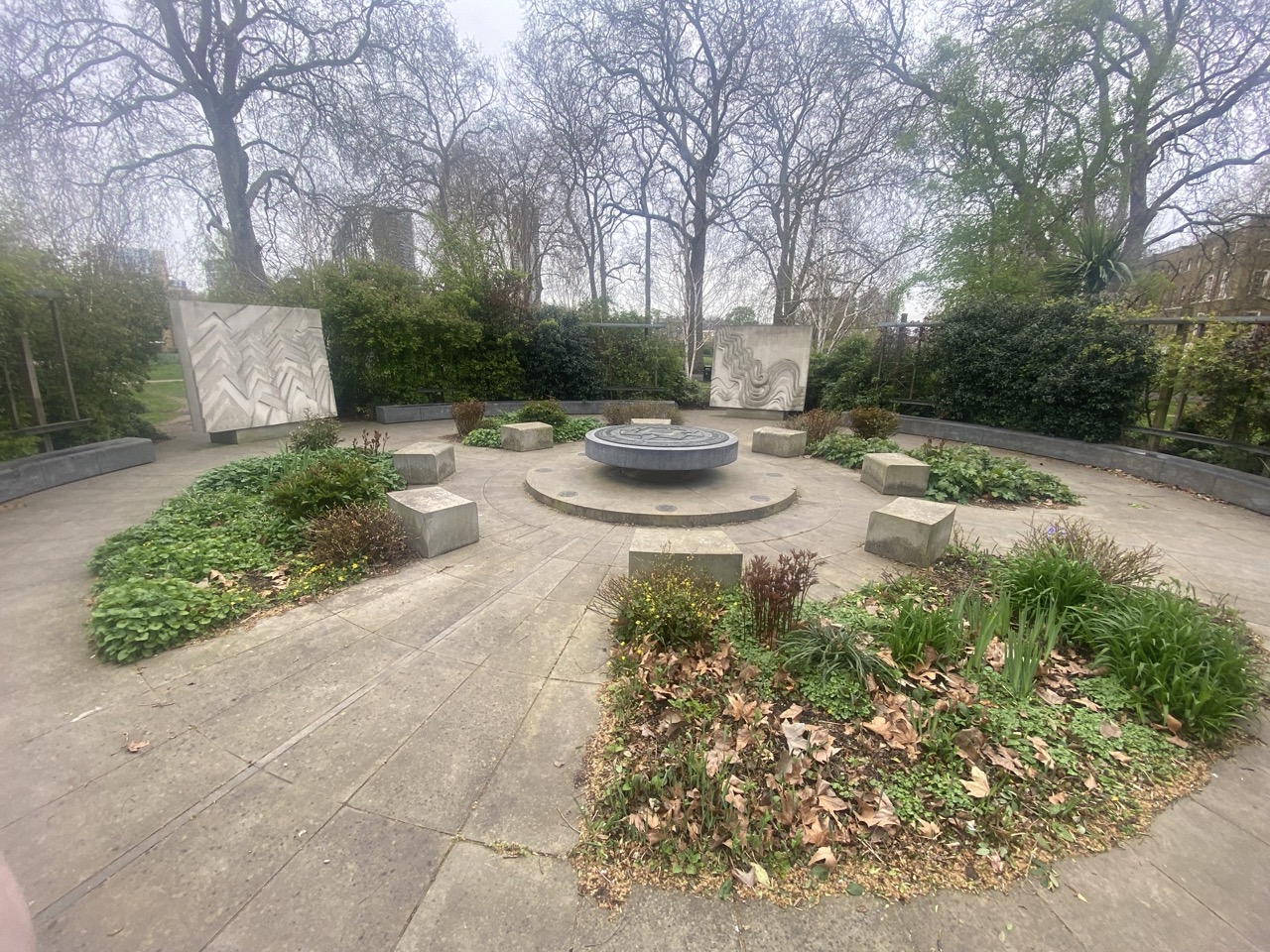
Imperial War Museum
After contemplating my life choices in the garden and finding them mostly acceptable, I took a lap around the complex before heading into the museum. It was a large structure, with 6 levels, 4 of which housed open exhibits for the public. The ground floor was mostly open and dotted with various war machines. A large bomb was stood on end and towered the center of the large chamber. It was anchored to a wall higher up, but I have a feeling that it would take a dozen people or more to tip it over.
The first floor was home to a few pieces related to the first world war. Since the large chamber extended clear to the roof, many of the exhibit pieces lined the back wall in a "U" shape, with lifts and stairs at the back. I quickly moved up to the second and entered a new exhibit dedicated to WW2. The space was generous and well laid out, snaking back and forth to maximize space for the displays. I was a bit surprised to see so many stories about soldiers on the Axis side scattered throughout the exhibit. Obviously, it makes sense that they should have a story as well, but something about it felt foreign to my American intuitions. I think so often we're given the narrative of the victor, never reflecting on the humanity of those who cross our path.
Other than the stories of those on the losing side of the war, the exhibit fit wholly within my expectations as it's a war I think most educated Americans are familiar with. The most interesting bit for me was seeing how daily life was changed for the average person in London. With air raids a constant threat, many people invested in bomb shelters. One that sticks out, was a rectangular box about the size of a twin bed and less than 3 feet tall, made from half inch steel and lined with a thick gauge wire mesh. According to the placard, it was given out for free by the government to homes that could not afford to purchase a more robust shelter, but it had been tested (and verified!) to withstand the weight of a home falling on it should the building collapse.
At the end of the exhibit, there was a small section on how the country aimed to rebuild in the shadow of the devastation caused by the war. Social programs like the NHS and free college were setup to help soldiers re-enter civilian life and provide benefits and jobs to a people who had sacrificed so much. I only wish our G.I. Bill has been expanded to a similar level in the US.
Holocaust Galleries
A new addition to the London IWM, the Holocaust gallery signage caught my attention as I entered the building an hour before. Despite considering myself fairly cultured as far as Texan's go, until that very moment, I had never visited a Holocaust museum, despite Dallas being home to exactly such a dedicated gallery.
I must say, I went in apprehensive. There was a sign indicating the gallery wasn't suitable for children under 14. As a child of the 90s and the early-ish internet, I'm no stranger to all manner of visual horrors, but something about this topic has always left a pit in my stomach. The knowledge of cruelty and inhumanity behind the acts of violence; the purposeful hatred and animosity to complete strangers; the fleeting thoughts alone are enough to bring me down.
The gallery was organized in a linear timeline, beginning with the rise of the Nazi party and documenting the gradual change within the German empire as the government started to classify certain peoples as lesser. As time went on, things got increasingly more hostile until violence against Jews and other "subhumans" leaked into the streets.
All around were letters and prints of documents kept by governments, newspapers, and individuals, chronicling the everyday and the changes therein. It is these papers I was most interested in. We all know the general history by now. The invasion of Poland, the opening of the camps, the involvement of other world nations and the eventual defeat of the Axis powers.
A promise I made to myself, was to not stop reading once beginning any of these personal correspondences. At times it was difficult. I wanted to turn away. The current war in Ukraine is fresh in my mind. Like so many, when the war started on February 24, 2022 I was glued to the news. I stayed up late watching live coverage of the war. I remember being speechless seeing the sky lit with the flashes of bombs around major cities. The backdrop of tall apartment buildings not that different from where I was at that very moment.
Since the war started, I've seen no shortage of death and destruction across social media. No doubt that what I've seen is also the tip of the iceberg. But I still engage. I'd be lying if I didn't admit that some of it is a morbid curiosity, but another part of me wants to know this story for myself. To one day honestly be able to discuss these events with my future children or grandchildren and educate them firsthand (or as close to it) of the terrible price we all pay in war.
I want to honestly say that, "I was there; I remember." and not feel guilty hiding behind the convenient excuses to look away.
The Holocaust gallery invoked the same feelings. How can I speak with any conviction if I turn away at the smallest amount of personal discomfort. To me, it's a small price to pay to live in the most peaceful time the world has ever known. I believe it is only through this shared understanding of human suffering that we can continue to advance forward into an even greater peace as a species.
If you find yourself in a city with a Holocaust museum or gallery, I highly suggest taking the time to visit regularly. I know that I'll be visiting the Dallas Holocaust and Human Rights museum when I return home.
https://www.iwm.org.uk/events/the-holocaust-galleries
Southbank
I exited the museum and consulted the map. After some deliberation, I decided to try my luck at walking along the south bank of the Thames. As I crested the hill at the roundabout near St. Mary's Gardens, I was amused to see an "Uber boat" quickly making its way upstream. Yes, it's exactly what it sounds like, a boat taxi, but given its size and location, I'm guessing it functioned more like a tourist trap than efficient transportation.
Across the river I had a marvelous view of Westminster and Big Ben, albeit one tower marred with a wrap of scaffolding to perform some repair.
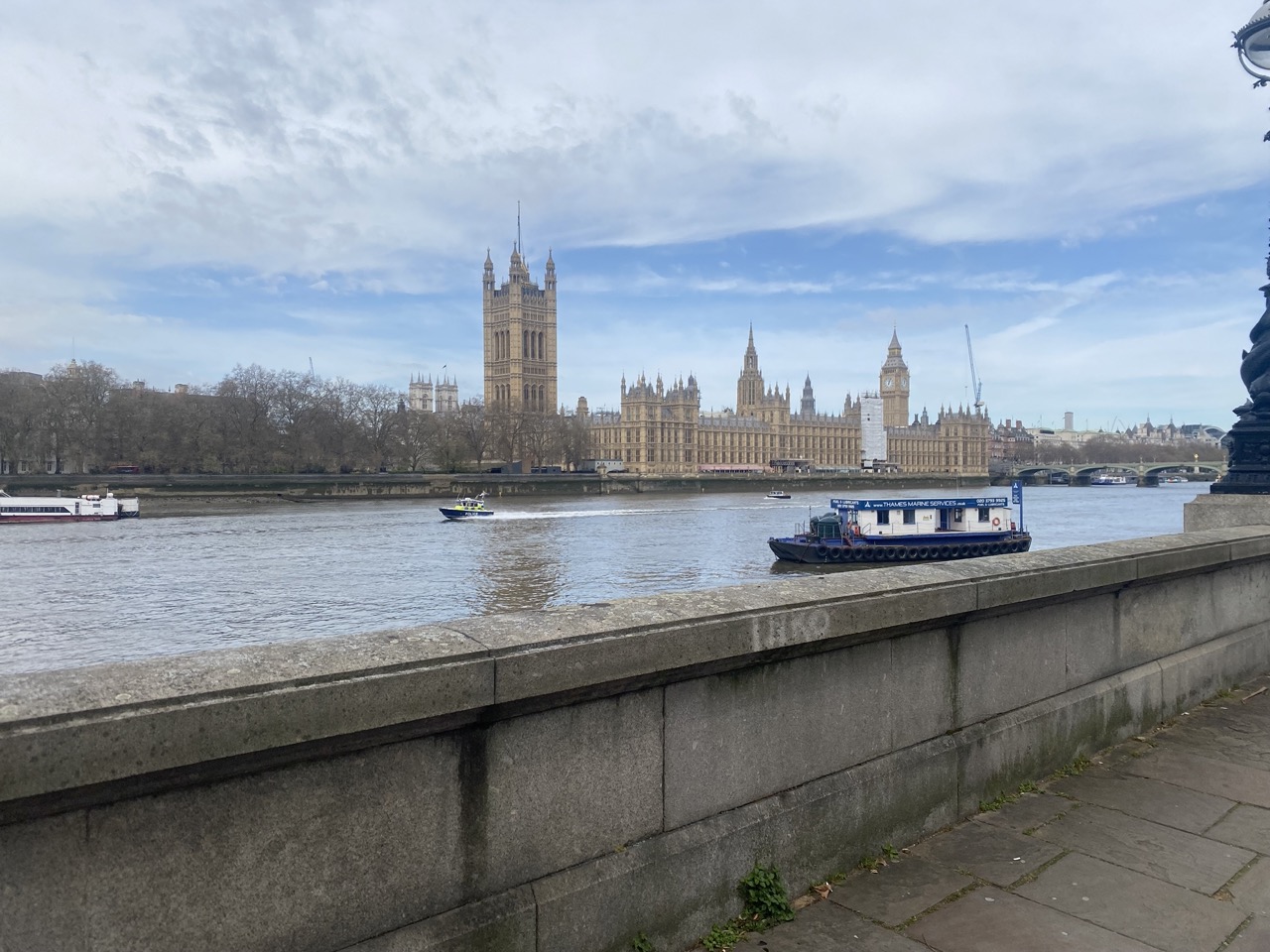
I continued down the roughly paved path abustle with people in the late morning and soon came to the south end of the St. Thomas hospital complex. Lining the wall on my right was a huge memorial dedicated to those who had lost loved ones in the early days of the Covid-19 pandemic. Hand written names and short notes were penned within painted hearts that covered the wall for at least a quarter mile. To me, it served as another reminder that we still exist within history; the events of today become pages to fill the textbooks of the future.
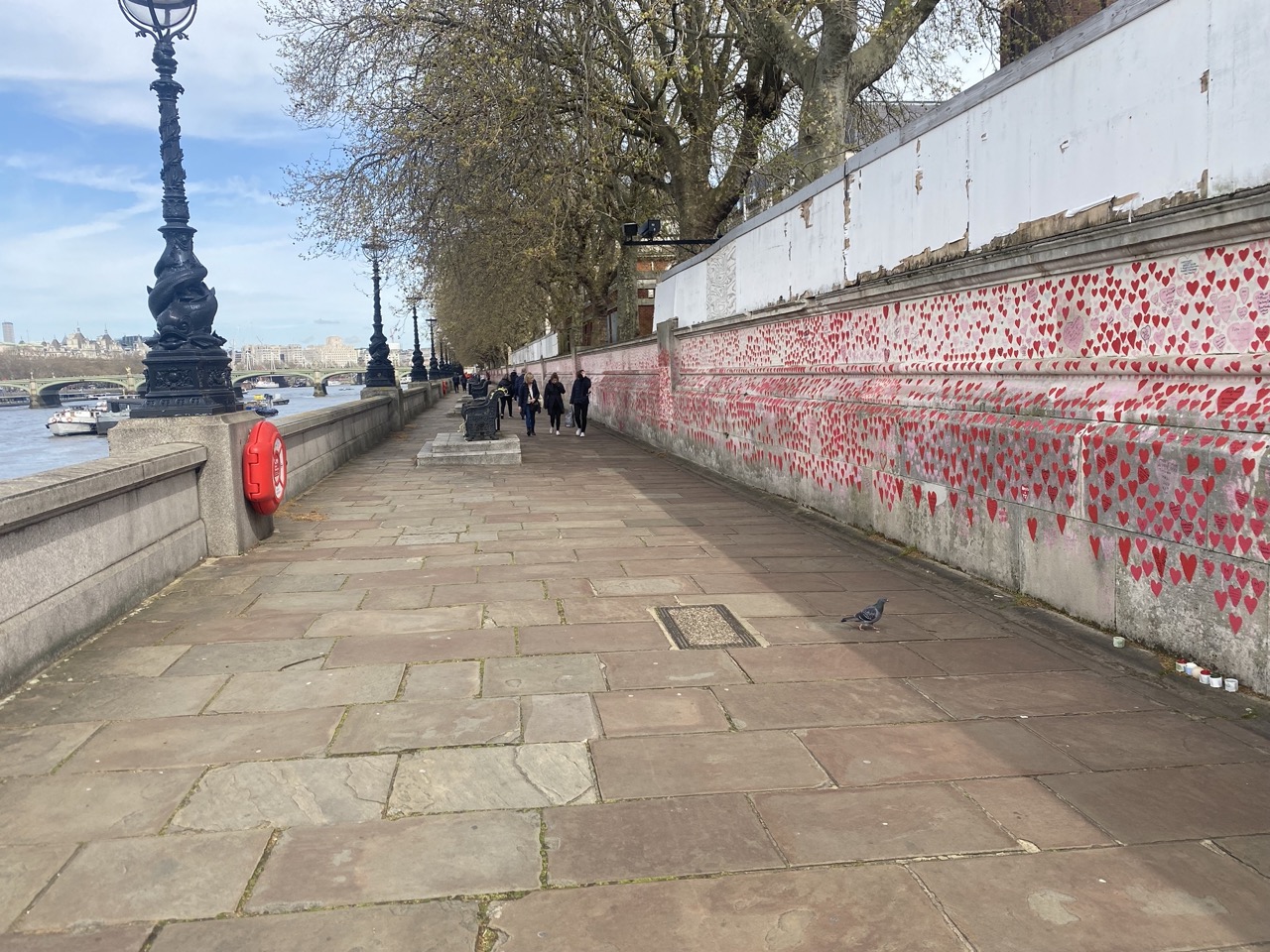

Picadilly Circus & Heddon Street Kitchen
Our final evening in London, Alanna and I made a special reservation at Heddon Street Kitchen near Picadilly Circus. You see, unlike every other attraction we had visited, this was the only concrete plans we had in London. Heddon Street Kitchen one of the cheaper restaurants in the city owned by celebrity chef Gordon Ramsay.
Since I was a teenager, I've always admired Ramsay. I can almost hear my dad's eyes rolling in his head reading this sentence. On more than one occasion whilst watching Hell's Kitchen, he would ask how we could stand to watch someone yell and scream at people for an hour. As a budding young chef though, I didn't so much mind the chaos.
Having worked in restaurants in my formative years, there is something surprisingly accurate about the reality TV show. Not the drama so much as the real world problems and pressures. When it's 8pm on Saturday evening and the line is packed with over a dozen tickets, hungry people waiting for you to prepare the food they are about to eat, things can get tense! Tempers can become enflamed and harsh words can fly and other insults will be muttered in quiet protest. As Ramsay would say, "It's fucking RAAWWW!!!"
Visiting the restaurant, like so much of the day before it, was a symbolic gesture. After a delicious fried squid appetizer, Alanna and I shared the Beef Wellington, a signature dish re-vitalized by the celebrity chef. I regret to inform you that I did not take a picture myself, but a quick Google search will show you the magnificent spread, served on a cutting board nearly the size of our table for two. We finished the meal with a selection of local cheeses and ventured back into the cold night. I did take a picture of a brilliantly lit Picadilly Circus before descending into the tube as a light mist began to fall.

Goodbye
The following morning, we packed our things and made our way to Kings Crossing, the city's large train station prominently featured in Harry Potter. I played the part of bag babysitter while Alanna wandered in search of sweets. Shortly upon her return, we meandered towards platform 5 to continue our journey north.
As the train began moving on its course out of the city, I was content. I have no regrets, but that doesn't mean I never wish to visit London again! I very much wish to visit this city again. Perhaps at Christmastime? I can imagine how the city would be quite lovely covered in a blanket of freshly fallen snow.